Content |
|---|
History
The German Shorthaired Pointer (Deutscher Kurzhaariger Vorstehhund, It is a breed of dog developed in the 1800 in Germany, used for hunting.
The exact origin of the German Shorthaired it is not clear. In accordance with the American Kennel Club, it is likely that the German Shorthaired Pointer is a descendant of a race known as German Bird Dog, which in turn is connected with the Old Spanish Pointer introduced in Germany in the 17TH century.
It is also likely that within their ancestors are German dogs and other tracking dogs, as the English Pointer. But, as the first studbook was not created until 1870, It is impossible to identify all the dogs that were needed to create this race.
Physical characteristics
It is a versatile dog, without a doubt the most complete and efficient for hunting breed, thanks to their physical qualities and innate aptitudes, Standing out mainly in:
- Find and display the birds elegantly.
- Collect both land and water without distinguishing between the hair and feather.
- It is the best companion of the bird of prey and the most characteristic in the art of falconry..
- Prove your courage facing animals as temperamental and determined as the wild boar.
- Able to follow a trail of blood as well as a Bloodhound.
- In the home is the faithful, patient and excellent companion of children.
The breed emerged in the 19th century due to the need for a versatile dog, that serve for the various forms of hunting, instead of having a different race for each specialty. With the hunting characteristics set, German breeders began the work of selecting dogs for its kind, and arriving at the end of the 19th century to the first racial standard, which over time, It has undergone changes to adapt to the natural evolution of forms of hunting.
Its main characteristics are:
- A special smell.
- A persistent and effective search.
- Great passion for work in water.
- Elegant style.
- Great physical resistance.
- The courage to face large and aggressive animals without hesitation.
- Higher than normal canine intelligence (ranks 17 in Stanley Coren's list: "The Intelligence of Dogs").
- The males measure of 62 to 66 cm and females in 58 to 63 cm., and weigh in 25 to 30 Kg.
- Coupled with this and its easy training, It is currently one of the most prized hunting worldwide breeds.
The sample in the German Shorthaired Pointer it is par excellence a moment of great beauty and emotion, a true expression of the hunting art. It is the culmination of an extensive search, in which the dog after traveling many kilometers, among bushes, thorns, slopes, ravines or immense Plains, Locate the bird carried by their emanations, this makes the German Shorthaired Pointer the best and inseparable companion of the versatile hunter.
The layer of German Shorthaired Pointer, it is short and flat with a dense coat protected by stiff hairs to make the coat waterproof and allow the dog to keep warm in cold climates. The color can be dark brown in English is defined as color “liver” (incorrectly as “chocolate” or “Brown”), black (Despite any area of black it is grounds for disqualification in American Kennel Club), either liver and black or black and white.
Commonly the head is a solid or nearly solid color with the body being mottled or “marking” with liver and white, sometimes with so-called large solid color stains “Saddle”.
Although the standard of German Shorthaired Pointer allows a slightly sandy coloring (“Mark Gelber”) in the extremities, This color is rare, any yellow coloration in contests of sample is by the AKC and the CKC, and the dog is disqualified.
The German Shorthaired Pointer has a longer life expectancy than many breeds of the same size, generally they live between 12 and 14 years, There have been cases of copies that have lived in 16 to 18 years.
The characteristic coloration of German Shorthaired Pointer provides you with unrivaled camouflage in winter seasons. To be standing next to dead trees and in the dirty snow, the mixture of the colors of Brown layer, black and white makes the dog bit visible.
Character and skills
German Shorthaired Pointer
dogs 101 02-01a german shorthaired pointer [webrip lks]-1.MKV
The race generally along well with other dogs, Although females seem to be much more dominant in the interaction. A strong hunting instinct is the most important characteristic of this breed., It is not always good if you share a home with other small pets such as cats and rabbits.
But with a proper training, the German Shorthaired Pointer, You will learn to distinguish what is the prey and what is not, which is why, You can live in a friendly manner with other family pets.
The German Shorthaired Pointer needs a good daily dose of exercise, since it is an energetic animal and needs to spend that accumulated energy, if he is not given physical activity he will seem hyperactive and may develop destructive tendencies.
It is good to take into account that this race is not a pet suitable for a home of sedentary or owners without experience.
The German Shorthaired Pointer he is good with children, but be careful because the breed can be a little gross, especially when they are puppies.
Characteristics "German Shorthaired Pointer"
Coexistence is important that you have with your new friend. Before considering the acquisition of a dog of the breed "German Shorthaired Pointer" you know certain factors. Not all breeds of dogs are apt to live in an apartment, you must take into account his character, their need for exercise, their interaction with other pets, their care and if you have small children, their level of tolerance towards them.
Adaptation ⓘ3.0 out of 5 stars (based on 1 review)
|
friendly dog ⓘ4.0 out of 5 stars (based on 1 review)
|
hair loss ⓘ3.0 out of 5 stars (based on 1 review)
|
|---|---|---|
Affection level ⓘ4.0 out of 5 stars (based on 1 review)
|
Need for exercise ⓘ5.0 out of 5 stars (based on 1 review)
|
Social need ⓘ4.0 out of 5 stars (based on 1 review)
|
Home ⓘ1.0 out of 5 stars (based on 1 review)
|
Toilet ⓘ2.0 out of 5 stars (based on 1 review)
|
Friendly with strangers ⓘ4.0 out of 5 stars (based on 1 review)
|
barking ⓘ3.0 out of 5 stars (based on 1 review)
|
Health ⓘ4.0 out of 5 stars (based on 1 review)
|
Territorial ⓘ3.0 out of 5 stars (based on 1 review)
|
Cat friendly ⓘ2.0 out of 5 stars (based on 1 review)
|
Intelligence ⓘ4.0 out of 5 stars (based on 1 review)
|
Versatility ⓘ3.0 out of 5 stars (based on 1 review)
|
Child friendly ⓘ4.0 out of 5 stars (based on 1 review)
|
Surveillance ⓘ2.0 out of 5 stars (based on 1 review)
|
joy ⓘ5.0 out of 5 stars (based on 1 review)
|
Photos “German Shorthaired Pointer”
Videos “German Shorthaired Pointer”
Type and recognitions:
- FCI CLASSIFICATION: 119
- Group 7: Pointing Dogs.
- Section 1: 1.1 - Continental Pointing Dogs, type Braco. With proof of work..
Federations:
FCI ⓘ, AKC ⓘ, ANKC ⓘ, CKC ⓘ, KC ⓘ, NZKC ⓘ, UKC ⓘ
FCI breed standard "German Shorthaired Pointer"
Alternative names:
1. GSP, DK (English).
2. GSP, DK (French).
3. Deutscher kurzhaariger, Vorstehhund, Deutsch Kurzhaar, Kurzhaar, GSP, DK (German).
4. Pointer alemão, Perdigueiro (Portuguese).
5. GSP, DK (español).
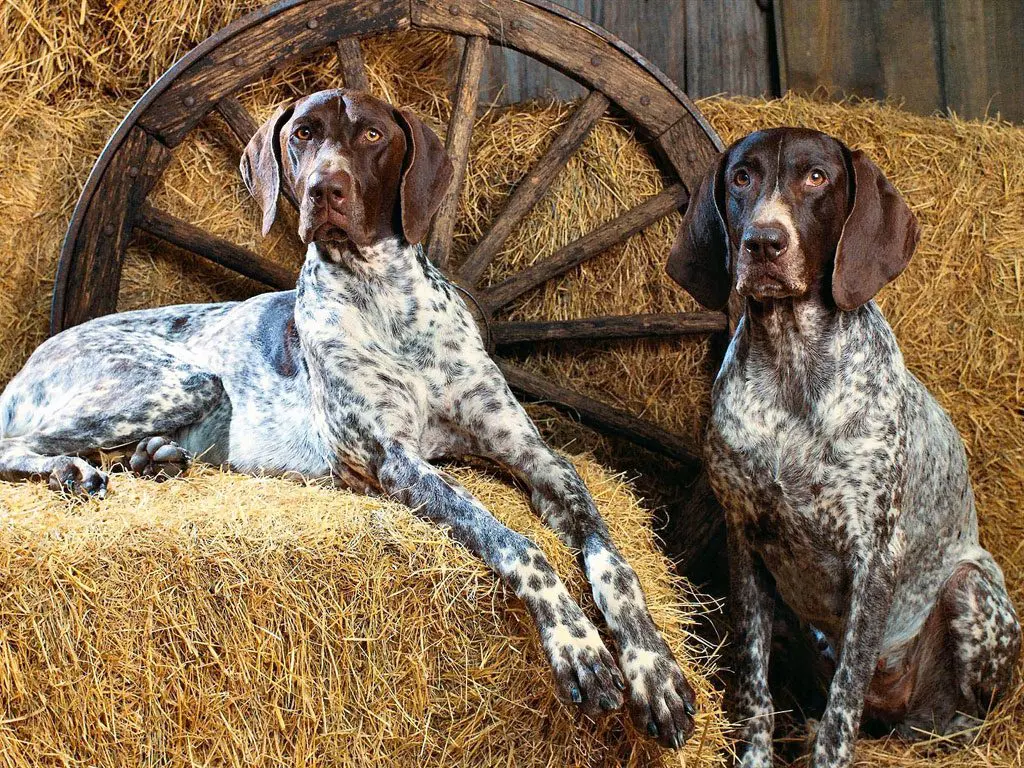
![dogs 101 02-01a german shorthaired pointer [webrip lks]-1.MKV](http://www.mascotarios.org/wp-content/uploads/2011/09/Braco-Aleman-de-Pelo-Corto.png) dogs 101 02-01a german shorthaired pointer [webrip lks]-1.MKV
dogs 101 02-01a german shorthaired pointer [webrip lks]-1.MKV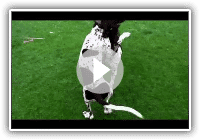 Klochard in Kenzo
Klochard in Kenzo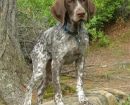
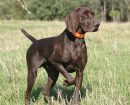
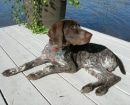
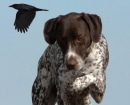
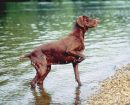
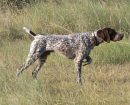
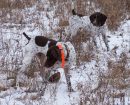

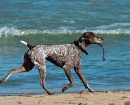
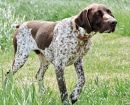
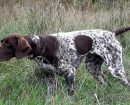

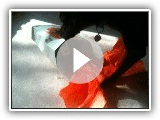 German Shorthaired Pointer Dog Opening a Present
German Shorthaired Pointer Dog Opening a Present Hunting moment with pointing dog
Hunting moment with pointing dog
is a special dog